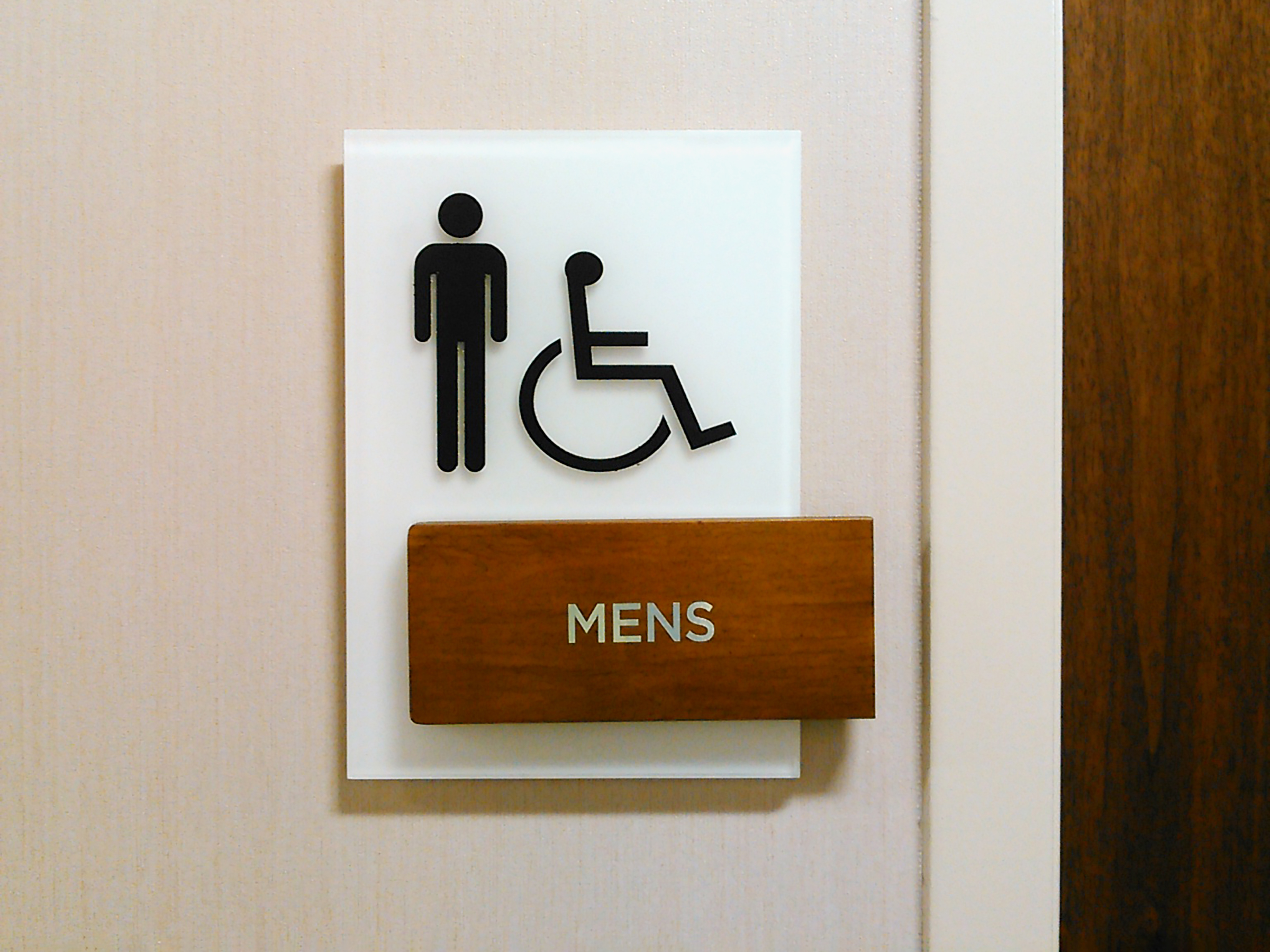Checking Out the Key Features of ADA Indications for Improved Ease Of Access
In the world of ease of access, ADA indicators serve as silent yet effective allies, guaranteeing that rooms are comprehensive and navigable for individuals with handicaps. By integrating Braille and tactile components, these signs break obstacles for the aesthetically impaired, while high-contrast color schemes and readable typefaces cater to diverse aesthetic demands.
Significance of ADA Conformity
Making certain compliance with the Americans with Disabilities Act (ADA) is critical for fostering inclusivity and equal accessibility in public rooms and workplaces. The ADA, passed in 1990, mandates that all public facilities, companies, and transportation services accommodate individuals with specials needs, guaranteeing they enjoy the same rights and opportunities as others. Compliance with ADA requirements not just meets lawful obligations but also enhances an organization's track record by showing its dedication to variety and inclusivity.
Among the vital aspects of ADA compliance is the implementation of available signage. ADA indications are created to make certain that people with disabilities can easily navigate through areas and buildings. These indicators need to comply with specific standards pertaining to dimension, font style, color contrast, and placement to assure presence and readability for all. Effectively applied ADA signs assists get rid of barriers that individuals with handicaps commonly come across, consequently promoting their independence and self-confidence (ADA Signs).
In addition, sticking to ADA regulations can minimize the danger of prospective penalties and legal repercussions. Organizations that fall short to adhere to ADA guidelines might face legal actions or charges, which can be both harmful and monetarily difficult to their public photo. Therefore, ADA conformity is essential to cultivating an equitable setting for everyone.
Braille and Tactile Aspects
The incorporation of Braille and responsive aspects into ADA signs personifies the concepts of accessibility and inclusivity. It is generally placed underneath the equivalent text on signs to guarantee that individuals can access the information without aesthetic assistance.
Responsive elements prolong past Braille and include raised characters and signs. These elements are developed to be noticeable by touch, enabling individuals to identify room numbers, restrooms, exits, and various other critical areas. The ADA sets certain guidelines concerning the dimension, spacing, and placement of these responsive aspects to enhance readability and guarantee consistency throughout various settings.

High-Contrast Color Pattern
High-contrast color design play an essential function in boosting the exposure and readability of ADA signs for people with visual impairments. These plans are vital as they make best use of the difference in light reflectance in between message and background, ensuring that indicators are easily discernible, also from a distance. The Americans with Disabilities Act (ADA) mandates the usage of specific color contrasts to suit those with limited vision, making it a crucial facet of conformity.
The efficacy of high-contrast colors depends on their ability to stand apart in various illumination problems, including poorly lit environments and areas with glow. Usually, dark message on a light background or light text on a dark history is utilized to accomplish optimal contrast. For circumstances, black message on a white or yellow history provides a plain aesthetic distinction that aids in quick acknowledgment and understanding.

Legible Fonts and Text Dimension
When taking into consideration the design of ADA signage, the choice of clear font styles and proper message dimension can not be overemphasized. These components are essential for making sure that signs are easily accessible to people with aesthetic disabilities. The Americans with Disabilities Act (ADA) mandates that font styles need to be not italic and sans-serif, oblique, manuscript, very attractive, or of uncommon type. These demands assist make sure that the text is quickly readable from a distance and that the personalities are distinct to varied audiences.
According to ADA standards, the minimum message height need to be 5/8 inch, and it must increase proportionally with watching distance. Uniformity in text dimension contributes to a natural visual experience, assisting individuals in browsing environments successfully.
Additionally, spacing in between letters and lines is important to readability. Sufficient spacing prevents published here personalities from showing up crowded, improving readability. By sticking to these standards, developers can substantially boost availability, ensuring that signage offers its intended function for all people, despite their aesthetic capabilities.
Efficient Positioning Strategies
Strategic placement of ADA signage is vital for maximizing ease of access and guaranteeing compliance with legal standards. ADA guidelines stipulate that signs need to be placed at an elevation between 48 to navigate here 60 inches from the ground to ensure they are within the line of view for both standing and seated people.
In addition, indicators have to be positioned surrounding to the lock side of doors to enable easy recognition before entrance. Uniformity in indicator positioning throughout a center improves predictability, reducing complication and enhancing general user experience.

Final Thought
ADA indications play a vital role in advertising accessibility by integrating features that resolve the requirements of people with specials needs. These components collectively foster a comprehensive setting, underscoring the importance of ADA compliance in guaranteeing equal accessibility for all.
In the world of availability, ADA indications serve as silent yet effective allies, making sure that areas are navigable and comprehensive for people with specials needs. The ADA, established in 1990, mandates that all public centers, companies, and transport solutions fit people with specials needs, guaranteeing they enjoy the same legal rights and possibilities as others. ADA Signs. ADA signs are created to make sure that individuals with impairments can conveniently navigate read the full info here via structures and spaces. ADA standards state that indications should be installed at a height between 48 to 60 inches from the ground to ensure they are within the line of sight for both standing and seated people.ADA indications play an essential role in promoting access by integrating attributes that resolve the requirements of individuals with impairments